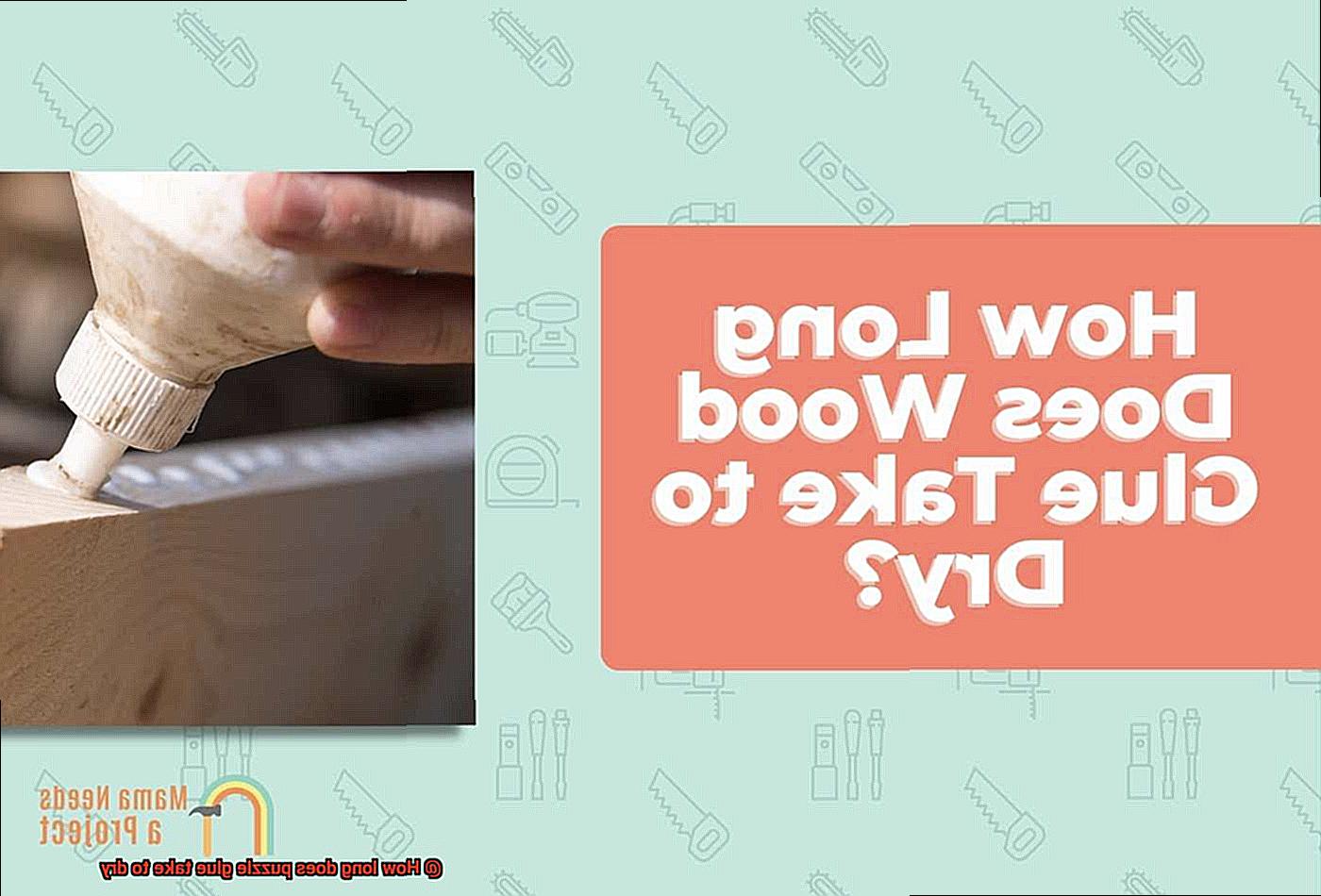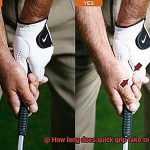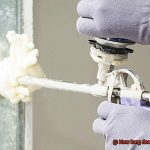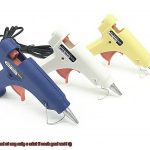Love diving into the world of jigsaw puzzles? They’re like little portals to intricate universes, offering both relaxation and a mental workout. But what happens when you’ve completed that mind-boggling puzzle masterpiece? You don’t want it to scatter into a thousand pieces just yet, right? That’s where puzzle glue swoops in to save the day.
But before you start preserving your hard work, there’s one burning question on your mind: How long does puzzle glue take to dry? It’s a crucial inquiry for any puzzle aficionado itching to show off their accomplishment. The drying time depends on several factors, from the type of glue you use to the environment you’re in.
In this blog post, we’ll venture into the captivating realm of puzzle glue and uncover its mysterious drying process. We’ll equip you with all the information you need to ensure your beloved puzzle stays intact and ready for admiration.
So, buckle up and join me on this magical journey through the art of preserving puzzles.
Different types of puzzle glue available
Contents
- 1 Different types of puzzle glue available
- 2 Factors that can affect the drying time of puzzle glue
- 2.1 Factor 1: Temperature and Humidity: The Climate Conundrum
- 2.2 Factor 2: Thin is In. The Art of Applying Puzzle Glue
- 2.3 Factor 3: The Formula Matters: Choose Wisely
- 2.4 Factor 4: Size and Complexity: A Test of Patience
- 2.5 Factor 5: Airflow is Key: Ventilate for Success
- 2.6 Factor 6: Brush for Success: The Application Technique
- 2.7 Factor 7: Supplemental Drying Aids: A Little Help Goes a Long Way
- 3 Drying time for liquid puzzle glue
- 4 Drying time for spray puzzle glue
- 5 Instant drying with peel-and-stick puzzle glue sheets
- 6 Tips for optimal drying of puzzle glue
- 7 Multiple layers or additional coats of glue and their impact on drying time
- 8 Curing time for maximum strength and durability
- 9 Conclusion
Jigsaw puzzles are not just a pastime but a testament to your patience and skill. To showcase your hard work and keep your completed puzzles intact, puzzle glue is a must-have. In this comprehensive guide, we will explore the wide variety of puzzle glue available, each offering unique features and benefits. From liquid glue to spray glue, powder glue to peel and stick sheets, and even the versatile Mod Podge, we’ll cover it all. Get ready to preserve your masterpieces like a pro.
Liquid Puzzle Glue:
For puzzle enthusiasts seeking easy application and a glossy finish, liquid puzzle glue is the go-to choice. With its brush applicator, this glue ensures even coverage across the puzzle surface. Once dry, it becomes transparent, enhancing the puzzle’s appearance. Drying times typically range from one to two hours, although external factors like temperature and humidity can influence the process.
Spray Puzzle Glue:
Convenience meets efficiency with spray puzzle glue. This mess-free adhesive comes in an aerosol can, allowing you to spray it directly onto the puzzle surface. Perfect for larger or intricately designed puzzles, this glue provides an even coating and dries swiftly in just 30 minutes to an hour.
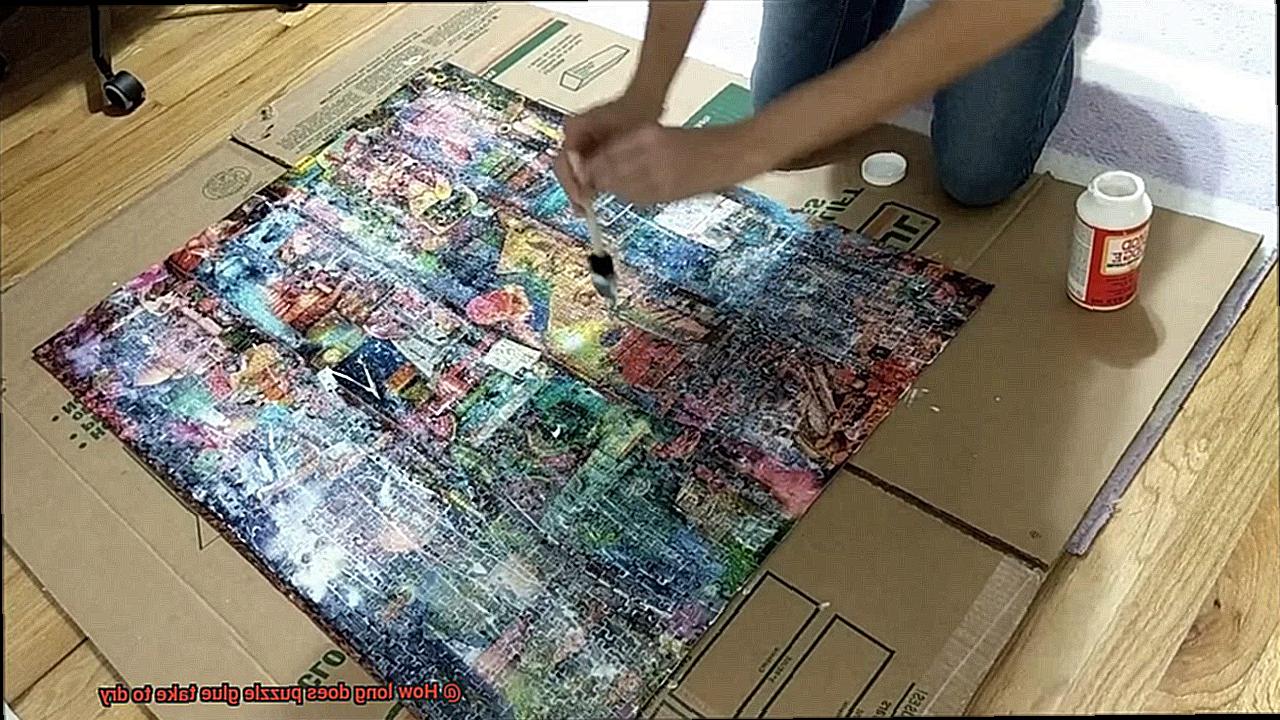
Powder Puzzle Glue:
If you’re looking for a unique approach, powder puzzle glue offers an exciting alternative. This type of glue requires mixing with water to create a paste-like consistency before application. Spread it onto the puzzle using a brush or sponge applicator, and witness it transform into a solid protective layer once dry. Keep in mind that drying times for powder glue can be longer, ranging from two to four hours.

Peel and Stick Puzzle Sheets:
Say goodbye to messy glues with peel and stick puzzle sheets—a modern innovation for hassle-free preservation. These pre-cut adhesive sheets fit most puzzles perfectly. Simply peel off the backing and apply the sheet to the back of your completed puzzle, sealing all the pieces together. Enjoy the instant drying time as the sheets adhere immediately upon contact.
Mod Podge:
Though not specifically marketed as puzzle glue, Mod Podge is a versatile crafting adhesive that doubles as an excellent preservation option. Available in various finishes, including matte and glossy, this adhesive is applied with a brush and dries clear, forming a protective seal. Drying times for Mod Podge can vary from 15 minutes to one hour, depending on the application thickness.
Factors that can affect the drying time of puzzle glue
To help you achieve flawless preservation, we will explore the factors that influence puzzle glue drying time. Discover practical tips and tricks to effectively manage these factors and ensure your puzzles last for years to come.
Factor 1: Temperature and Humidity: The Climate Conundrum
Factor 2: Thin is In. The Art of Applying Puzzle Glue
Remember, less is more when it comes to applying puzzle glue. Thin layers result in quicker drying times. Thick layers, on the other hand, require more solvent evaporation, extending drying time. Fight the temptation to slather on the glue; instead, aim for a smooth, thin coat for efficient drying.
Factor 3: The Formula Matters: Choose Wisely
Puzzle glues come in different formulations, leading to varying drying times. Read the manufacturer’s instructions to determine the expected drying time for your chosen product. Some glues are specially designed for quick drying—a game-changer if you’re eager to tackle your next puzzle challenge.
Factor 4: Size and Complexity: A Test of Patience
Consider the size and complexity of your puzzle—the ultimate test of patience when it comes to drying time. Larger puzzles with countless pieces naturally require more drying time. Intricate or three-dimensional puzzles with intricate designs may trap moisture, slowing down the process. Take a deep breath and exercise patience.
Factor 5: Airflow is Key: Ventilate for Success
Proper ventilation is vital for efficient drying. Ensure your workspace has good airflow or use fans to enhance air circulation. This expedites solvent evaporation, reducing overall drying time. Don’t let stagnant air hinder your preservation goals.
Factor 6: Brush for Success: The Application Technique
How you apply puzzle glue can significantly impact drying time. Employ a brush or sponge applicator to ensure an even layer of glue, promoting better distribution and quicker drying. Avoid uneven application or excessive glue, as these areas require additional time to dry completely.
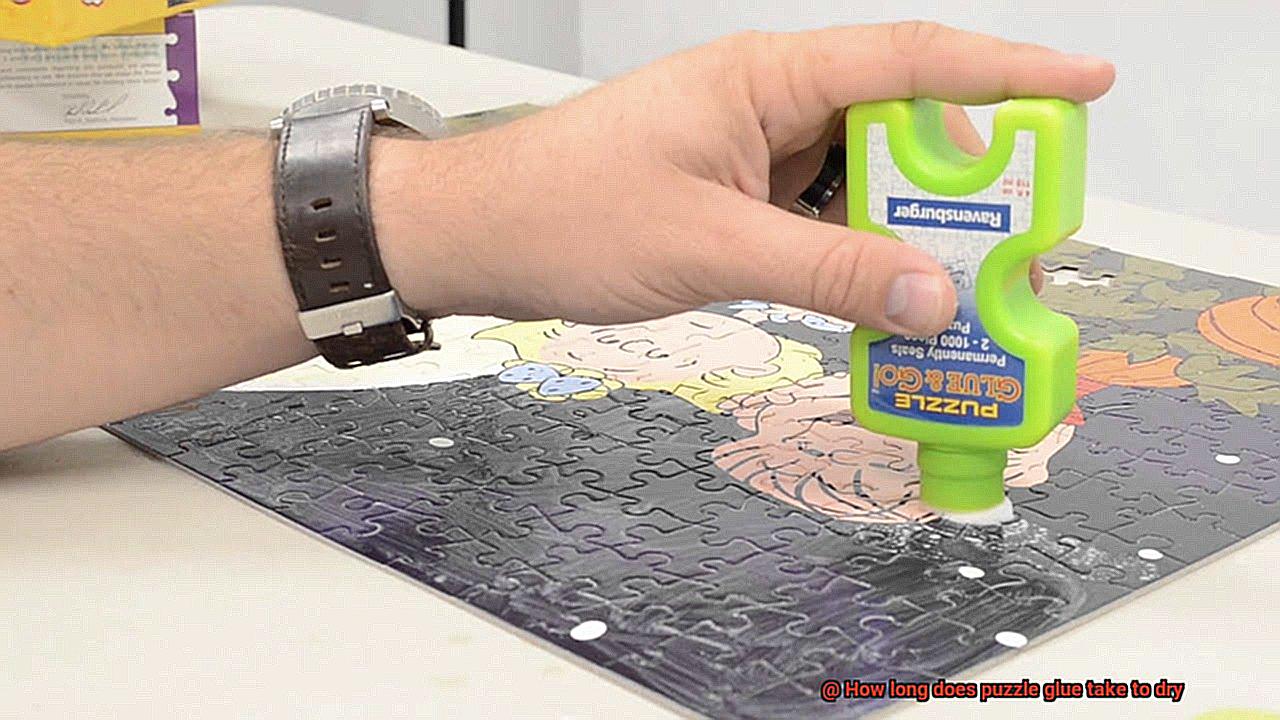
Factor 7: Supplemental Drying Aids: A Little Help Goes a Long Way
In some cases, puzzle glues may suggest additional aids to expedite drying. Consider using a hairdryer on a low heat setting, placing the puzzle on a warm surface, or utilizing a dehumidifier in the room. Follow the manufacturer’s instructions to prevent any damage to your puzzle or glue.
Drying time for liquid puzzle glue
Today, we embark on a journey to uncover the factors that influence this crucial process, and in doing so, master the art of preserving and displaying our beloved puzzles. So, grab your trusty glue and brace yourselves for an enlightening adventure.
Factor #1: Brand and Type of Glue:
In this vast universe of puzzle glues, each brand and type possesses its own unique formulation and drying time. Some glues may reveal their dry brilliance within a few short hours, while others demand an overnight embrace. To unravel this mystery, always consult the manufacturer’s instructions and acquaint yourself with the specific nature of the glue you’ve chosen.
Factor #2: Thickness of Application:
The thickness of the glue layer is an unsung hero in our quest for expeditious drying. Thin layers emerge victorious in the race against time, drying swiftly and leaving behind no gloopy residue. So, my friends, remember to apply a thin and even layer of glue to hasten the process and avoid any unwelcome textures.
Factor #3: Temperature and Humidity Levels:
Behold the power of climate. Higher temperatures and lower humidity levels conspire to accelerate drying time, like a symphony of efficiency. Seek out a well-ventilated sanctuary with optimal temperature and humidity conditions to bask in the glory of swifter drying. Pro tip: steer clear of humid bathrooms or damp basements in this noble pursuit.
Factor #4: Material Matters:
The very material from which your puzzle is crafted holds sway over its destiny in the realm of drying time. Thick cardboard puzzles or intricate designs demand more patience as they require additional time for the glue to fully dry and set. Let not your expectations falter in light of this truth, but rather, embrace it as an inevitable part of the puzzle preservation process.
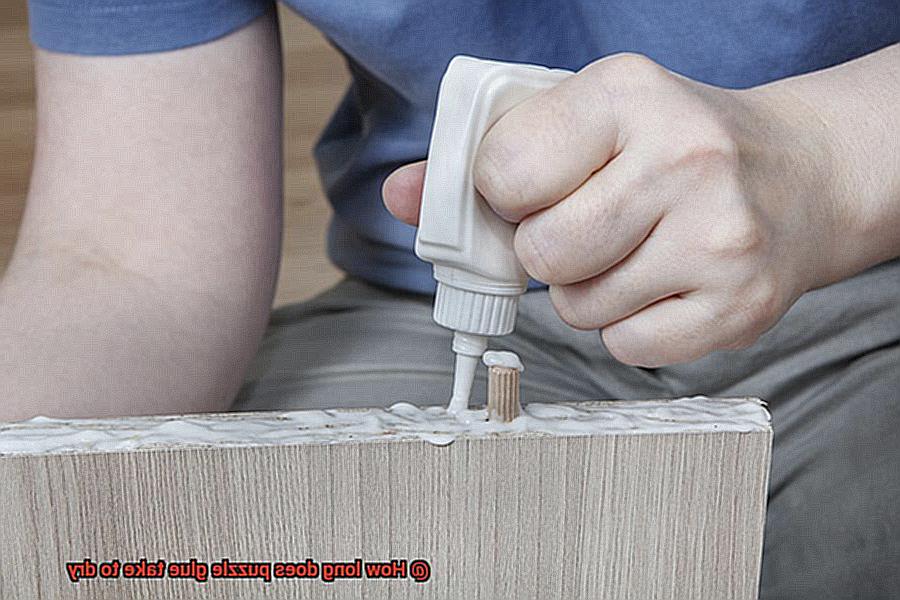
Patience is Key:
Ah, dear comrades, patience is indeed the crowning virtue in our noble pursuit. To ensure the glue has achieved its full potential, grant it a minimum of 24 hours to dry before handling or moving the puzzle. This waiting period bestows upon the glue ample time to set and harden, forging an unbreakable bond between every single piece of your masterpiece.
A Word on Curing Time:
Listen closely, for here lies an invaluable secret. Some liquid puzzle glues continue to mature and strengthen long after they have dried. While they may appear dry to the touch within a few hours, heed the wisdom of the manufacturers and embrace any additional curing time required. Remember, great things come to those who wait.
Drying time for spray puzzle glue
The answer is not as simple as a single timeframe. Let’s dive deeper into the world of spray puzzle glue and unravel its drying time mysteries.
First and foremost, the brand and type of puzzle glue you choose play a significant role in determining drying time. Each brand has its own unique formula, resulting in varying drying times. To ensure you have a clear understanding of the drying process, make sure to carefully read and follow the instructions provided by the manufacturer.
In general, spray puzzle glues boast a relatively quick drying time compared to other glues. Many brands claim that their glue can dry within a speedy 1-2 hours. But hold on. Don’t start celebrating just yet. This timeframe can fluctuate based on factors such as the thickness of your application and environmental conditions.
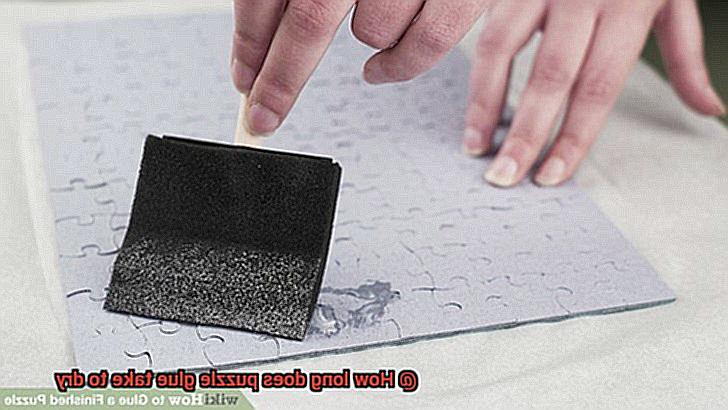
When applying spray puzzle glue, it’s best to use thin, even layers. Thick applications may take longer to dry and can leave you with an unpleasantly tacky finish. Keep in mind that environmental factors also come into play. Higher temperatures and lower humidity levels are your allies, accelerating the drying process. Conversely, cooler temperatures and higher humidity levels may drag out the waiting game.
To ensure optimal drying results, find yourself a well-ventilated area with moderate room temperature and humidity levels. This ideal environment will be your accomplice in achieving faster drying and preventing any moisture-related mishaps like warping or bubbling of the precious puzzle pieces.
Now here comes the most crucial part: exercise patience. While the glue may feel dry to the touch within a couple of hours, it’s essential to allow it to fully cure before handling or framing your masterpiece. The curing process can range from 24 to 48 hours, depending on the brand and environmental conditions.
Remember, my fellow puzzle enthusiasts, patience is the name of the game when it comes to spray puzzle glue drying time. Rushing the process may lead to an imperfect finish, and we can’t have that after all your hard work. Trust in the manufacturer’s instructions, create the perfect drying environment, and you’ll be rewarded with a beautifully preserved puzzle that can be proudly displayed or cherished time and time again.
Instant drying with peel-and-stick puzzle glue sheets
These innovative sheets offer the incredible feature of instant drying. Yes, you read that right. No more agonizing hours or even days of waiting for the glue to set. Thanks to a specially formulated adhesive, these glue sheets dry in a snap, allowing you to handle and frame your puzzle shortly after applying the glue. Say goodbye to the dreaded waiting game.
But how long is “instant” exactly? Well, it depends on factors like humidity and temperature, but in general, most peel-and-stick puzzle glue sheets dry within a mere 15-30 minutes. That’s right, in just a short amount of time, your puzzle will be ready for its grand debut.
However, before you get too excited, there is an important note to keep in mind. Although the adhesive dries quickly, it’s still recommended to wait at least 24 hours before handling or framing the puzzle. This gives the glue enough time to fully set, ensuring a strong bond and long-lasting preservation.
Using peel-and-stick puzzle glue sheets is a breeze. Simply apply the adhesive side of the sheet onto the front surface of your completed puzzle. Smooth out any bubbles or wrinkles for a flawless finish. Then, gently press down on the puzzle to ensure optimal adhesion between the pieces and the glue sheet. To evenly distribute pressure, place a clean, flat object on top of the puzzle and apply some weight.
Once the recommended drying time has passed, prepare yourself for the big reveal. Carefully lift up one corner of the puzzle and peel off the backing paper from the adhesive sheet. Continue peeling while pressing down on the puzzle with your other hand until all of the backing paper is removed. And voila. Your puzzle is now ready to be handled and displayed with pride, boasting a protective and glossy finish provided by the glue sheet.
Before you get too carried away, remember that peel-and-stick puzzle glue sheets are designed for one-time use only. Attempting to reposition or remove the adhesive may cause damage to your puzzle or leave unwanted residue on its surface. So make sure you’re happy with the placement before committing.
Tips for optimal drying of puzzle glue
Now, it’s time to preserve it for everyone to admire. One crucial step in the preservation process is drying the puzzle glue properly. In this guide, we will explore the best tips and techniques to ensure optimal drying of puzzle glue, so your masterpiece stays intact and ready for display.
Apply Thin and Even Layers:
To promote faster drying, it is essential to apply puzzle glue in thin and even layers. By delicately spreading the glue across the front side of the puzzle using a brush or sponge, you allow for better evaporation of moisture content, ensuring a quicker drying time. Think of it as gently caressing your completed masterpiece with a veil of adhesive, making sure every nook and cranny is covered.
Choose a Well-Ventilated Area:
Selecting a well-ventilated area is crucial for quicker drying of puzzle glue. The gentle breeze of fresh air dances around your puzzle, promoting faster evaporation and reducing the overall drying time. Picture your puzzle basking in a sunlit room with open windows, inhaling the crispness of the air. Ensure that the room has moderate temperature and low humidity levels, as high humidity can prolong the drying process and dampen your excitement.
Place Puzzle on a Flat Surface:
To prevent any distortion or warping of your puzzle pieces during the drying process, it is advisable to place the puzzle on a flat surface. Imagine your puzzle laid out like a canvas before a master artist, ready to be transformed into a work of art. This helps ensure even and consistent drying, maintaining the integrity of your completed masterpiece. Give it the stability it deserves.
Allow Each Layer to Dry Completely:
Some puzzle glues require multiple coats for a secure bond that rivals the strength of your completed puzzle. Treat each layer with the patience it deserves, allowing it to dry completely before applying the next coat. Be still like a sculptor, patiently waiting for each layer to set and harden. Rushing through this step may result in incomplete adhesion or bubbling, tarnishing the beauty of your creation.
Speed Up Drying with Air Circulation:
If you’re eager to see your puzzle dry faster, you can employ the assistance of a fan or a dehumidifier in the room. These devices become your allies, creating a symphony of air circulation that expedites the drying process. However, be cautious not to use excessive heat, as it may damage the puzzle or affect the adhesive properties of the glue. Maintain a delicate balance between speed and preservation.
Multiple layers or additional coats of glue and their impact on drying time
Have you ever pondered the intricate art of applying multiple layers or additional coats of puzzle glue and how it impacts the drying time? As an avid puzzle enthusiast, I have embarked on a quest to unlock the secrets behind preserving our beloved puzzles. Join me on this captivating journey as we delve into the fascinating world of puzzle glue and unveil the perfect balance between adhesion and drying time.
The Glue Factor:
Let’s commence our exploration by unraveling the undeniable truth that not all puzzle glues are created equal. Diverse formulations such as liquid glues, spray-on glues, or adhesive sheets possess varying drying properties. To achieve optimal results, it is imperative to meticulously read and adhere to the manufacturer’s recommendations for your specific glue type.
Layer by Layer:
Patience becomes our guiding principle when it comes to applying multiple layers of puzzle glue. Each layer necessitates ample drying time before another can be added. By allowing each coat to dry completely, we foster a steadfast surface that seamlessly seals the puzzle pieces together. Rushing this delicate process can result in prolonged drying times and potential adhesion complications – a true puzzler’s nightmare.
The Thickness Factor:
In this intricate puzzle of life, thinner proves to be better. Thick layers demand extended drying periods compared to their slender counterparts. To expedite the drying time, we must apply thin and even coats of glue. However, should you crave a thicker layer for added protection or a lustrous finish, it is wise to grant sufficient drying time between each layer.
The Climate Effect:
Prepare yourself for this astonishing revelation – environmental factors wield considerable influence over drying time. Warmer temperatures and lower humidity levels typically accelerate the drying process, while cooler temperatures and higher humidity can hinder it. Selecting a well-ventilated area for your gluing escapades ensures optimal drying conditions and a triumphant outcome.
Curing: The Final Flourish:
Ah, behold the pièce de résistance – curing, the enigmatic ingredient that grants our puzzle glue its full potential. Even if the glue appears dry to the touch, it often requires additional time to cure completely. To enhance the durability and longevity of your preserved masterpiece, consult the manufacturer’s instructions for specific curing recommendations.
Curing time for maximum strength and durability
The completion of a challenging puzzle brings an unparalleled sense of satisfaction. As the final piece finds its rightful place, a beautiful image emerges. But what comes next? How can you ensure that your masterpiece remains intact for years to come? The secret lies in puzzle glue and its curing time for maximum strength and durability. Embark on a journey with me as we explore the factors that influence curing time and discover the secrets to preserving your puzzles with utmost care.
Factor 1: The Type of Glue:
Choose your puzzle glue wisely, for it plays a pivotal role in determining how long the curing process will take. Water-based glues, relying on water content evaporation, require more time to dry. Meanwhile, solvent-based glues, enriched with volatile organic compounds (VOCs), dry faster due to their chemical composition. Weigh the advantages and disadvantages of each type before making your selection.
Factor 2: Environmental Conditions:
Nature also has her say in the puzzle preservation process. Humidity and temperature significantly impact drying times. High humidity environments prolong the curing time for water-based glues, while extreme temperatures affect solvent-based glues. To ensure optimal curing, find a well-ventilated area with moderate humidity levels and a stable temperature range.
Factor 3: Puzzle Size and Thickness:
The size and thickness of your puzzle play a vital role in determining the curing time. Larger puzzles with more pieces or thicker puzzles demand additional drying time to guarantee complete glue penetration and secure piece bonding. Always consult the manufacturer’s instructions and adhere to their recommended curing times based on your puzzle’s complexity.
Patience is a Virtue:
Now that we understand the factors at play, let’s address the virtue of patience. Tempting though it may be to showcase or frame your completed puzzle right away, rushing the curing process can yield subpar results. It is crucial to allow the glue to cure for at least 24 hours before handling or framing the puzzle. This waiting period provides sufficient time for the adhesive to set and harden, ensuring a robust bond between the pieces.
Also Read: How to Remove Mod Podge – Glue Things
Conclusion
Puzzle glue, like any other adhesive, requires a certain amount of time to dry completely. The drying time can vary depending on the brand and type of glue you are using. On average, puzzle glue can take anywhere from 1 hour to 24 hours to dry fully. It is important to follow the instructions provided by the manufacturer for the best results.
During the drying process, it is crucial to ensure that the puzzle remains undisturbed and flat. This will help prevent any warping or unevenness in the final result. Patience is key when waiting for puzzle glue to dry, as rushing the process can lead to disappointment.
Imagine watching as each piece of your completed puzzle slowly transforms into a solid masterpiece. As the glue dries, it binds all the tiny interlocking pieces together, creating a seamless and durable finish. The anticipation builds with each passing minute until finally, you can proudly display your puzzle for all to admire.
So how long does it really take for puzzle glue to dry? Well, it depends on various factors such as humidity levels and temperature in your environment. If you’re working in a humid climate, expect a longer drying time compared to a drier one. Similarly, lower temperatures may extend the drying process.
Regardless of these variables, it’s always wise to err on the side of caution and allow ample time for your puzzle glue to dry completely. After all, rushing could jeopardize all your hard work and leave you with a lackluster outcome.
In conclusion, puzzle glue typically takes anywhere from 1 hour to 24 hours to dry fully. However, it’s essential to consider external factors such as humidity and temperature that may affect drying times.

